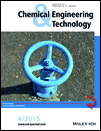Flocculation Using Polyacrylamide Polymers for Fresh Microalgae
Abstract
Flocculation-sedimentation of five microalgae species was tested with high-molecular-weight cationic polyacrylamide flocculants. An apparent difference in the shape of flocculated particles was detected when comparing flocculation with increasing pH of the microalgae culture to that with polyacrylamide. In the case of flocculation with pH adjustment, the surface charge of the cells is neutralized. Polyacrylamides can cause induction of bridging and facilitate sedimentation. Significantly higher flocculation efficiency was found for microalgae with a cylindrical shape and with the ability to form colonies. Overdosing of the flocculant may lead to a reduction in the flocculation efficiency as a result of destabilization of the suspension of charge excess flocculant. If algogenic organic matter was removed, flocculant consumption was drastically reduced and sedimentation of large flocs occurred very fast.




